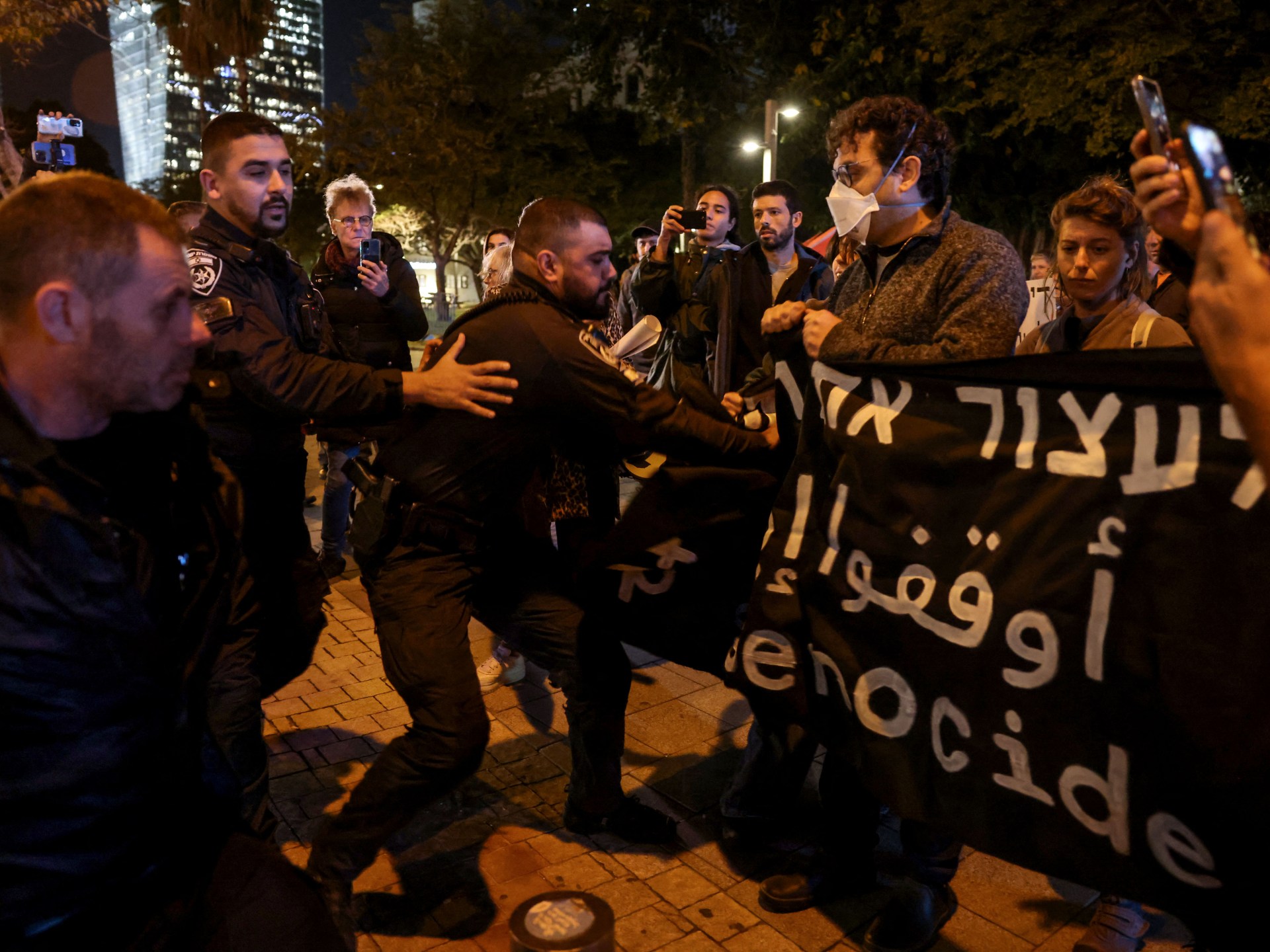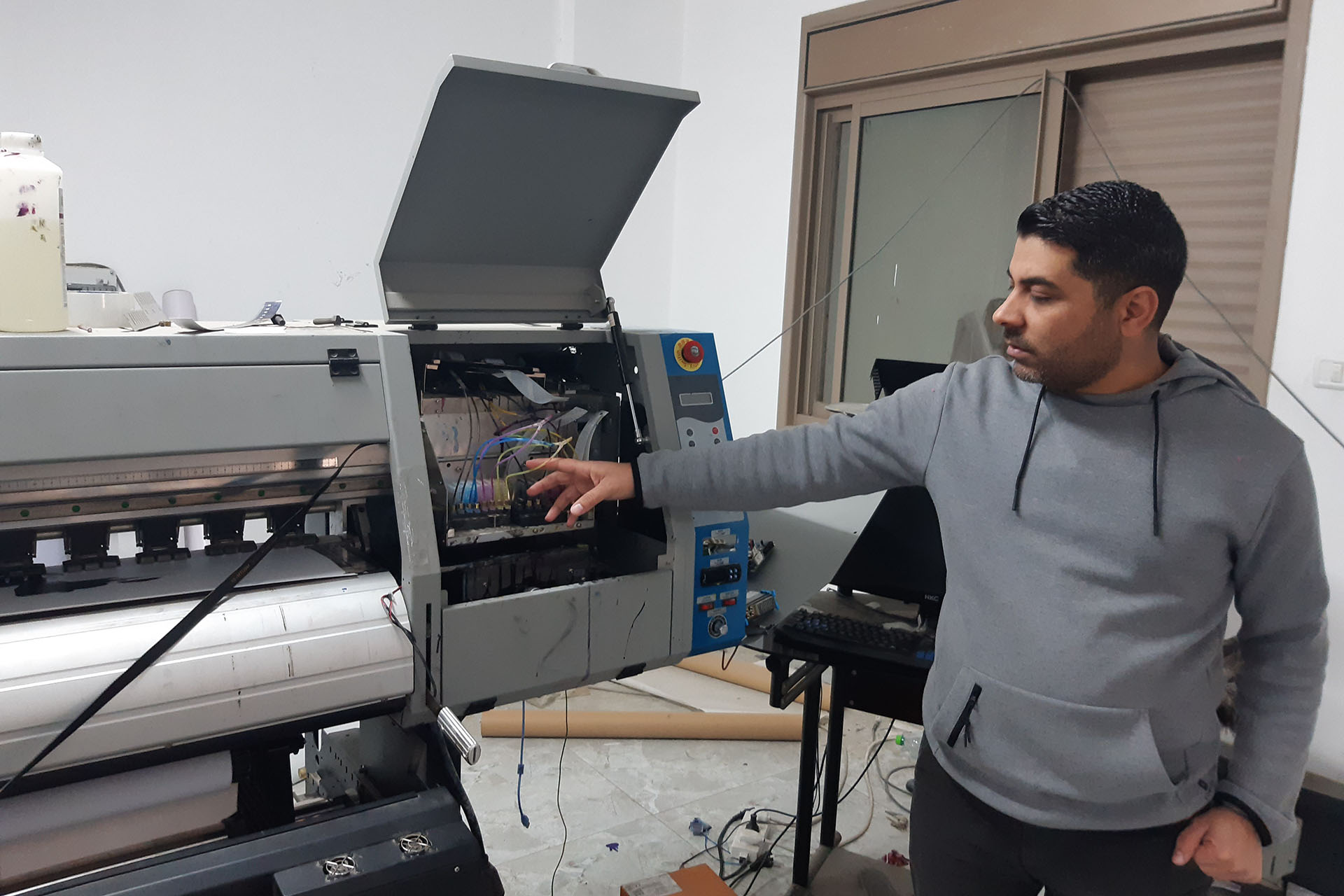Occupied Jerusalem- Israel has been living since the outbreak Battle of Al-Aqsa Flood On October 7, 2023, there was an intertwined reaction between the policy of the military and official establishment and the Israeli social movement, which is represented by a hidden conflict between the various elements and joints of the state that was dominated by disputes and divisions.
These internal divisions were evident in the debate over the failure to prevent the “Al-Aqsa Flood” and the failure to achieve the goals of the war, which were to undermine the arsenal. agitation Military forces, eliminating its rule in the Gaza Strip, and returning all Israeli detainees to the resistance.
Al Jazeera Net, through conversations with Israeli political and military analysts and researchers, reviewed the elements of Israeli entanglement regarding the war on Gaza, whether the right-wing coalition government headed by Benjamin NetanyahuThe emergency government and the war council that emerged from it, the extreme right-wing parties, and the protest movement of the families of detainees in Gaza.
The beginning of cracking and cracking
The complexities of the Israeli scene go back to the formation of the 37th government headed by Benjamin Netanyahu, on December 29, 2022, after elections. The Knesset Which took place on November 1 of the same year, and established the beginning of the societal, political and military rift that is plaguing the public life of Israelis.
The coalition government, which received the support of 64 Knesset members out of 120, was formed from 6 parties: Likud PartyAnd the Haredi parties, “Torah Judaism.”“Shas” PartyThe settler and far-right parties are represented by the “Religious Zionism Alliance,” and the “Jewish Greatness” and “Noam” parties.
Political analyst Akiva Eldar says that the formation of this government reflects the right’s dominance of the political scene and discourse, and the shift of Israeli society toward… The extreme right Religiosity, the extreme shift in the Israelis’ positions towards the Palestinian issue, the right-wing Zionist consensus on the “Land of Israel” in all of historic Palestine, and the rejection of the existence of any Palestinian entity between the sea and the river.
The Netanyahu government carried in its agenda a rapprochement between the positions of voters of the parties in the government coalition, which expressed consensus on the fundamental issues, whether the Jewishness of the state and adherence to the teachings of the Torah and its promotion, the relationship of religion to the state, reservations about “liberal Zionism” and democratic values, and support for the settlement project on the lands of the West Bank. And its annexation to Israeli sovereignty.
In light of this right-wing trend, the features of the rift in Israeli society crystallized, as Netanyahu, who assumed the position of Prime Minister for the sixth time, was the focus of controversy on the Israeli political map, due to his trial in files that included charges of corruption and breach of trust, which transformed the intertwined elements of the state into a state of broad social movement.
Transformation into a protest movement
The controversy expanded in Israeli society after the formation of the government, between the Knesset and the opposition camp headed by the head of the “There is a Future” party. Yair Lapidregarding the identity and features of Israel, between considering it a “democratic Jewish state” or a “religious Jewish state,” which created a state of polarization among the opposition parties that produced a protest movement against amendments to the Israeli judicial system, which was led by Justice Minister Yariv Levin.
The judicial reform protests began on January 7, 2023, at the beginning of the second week of the right-wing government’s term, and periodic demonstrations were organized every Saturday evening, against everything related to legislation related to weakening the judicial system and undermining the powers of the Supreme Court.
The protests continued throughout the year, and were joined by large sectors and segments of Israeli society, including former military and security leaders and officers from the reserve forces and the Air Force, all of whom warned of the repercussions of the judicial amendments on Israel “as a Jewish, Zionist and democratic state,” and the protest movement continued to expand until Last October.
The shock of intelligence failure
In the face of the shock of the sudden attack launched by the Hamas movement on the “Gaza envelope settlements” on October 7, 2023, the protest movement remained silent, and it seemed as if Israeli society was united with the declaration of a state of emergency and the beating of the drums of war on Gaza, despite all the differences and divisions that the Netanyahu government had established. Which was considered the most extreme and religious in the history of Israeli governments.
This shock was accompanied by preliminary information reported by the Israeli media, about the existence of an intelligence failure and failure to prevent the sudden attack, so Netanyahu quickly declared a state of emergency and a broad call-up of all reserve forces in the Israeli army, in preparation for the ground incursion into the Gaza Strip, and “in an effort to evade responsibility for the failure, and to preserve The strength of the far-right government,” according to Eyal Alema, a military analyst on Israeli state television.
Netanyahu sought to create a state of Israeli consensus for the war on Gaza, and to frame the fragile scene of unity with phrases such as “a war against the home and against the homeland,” “a war for existence,” and “a second war of independence,” and this crystallized as the extent of the losses and the number of dead and detained Israelis were revealed by the Palestinian resistance. To cover up the rifts and fissures that accompanied his society during the term of his government.
In an attempt to reduce the clashes with state elements, Netanyahu was forced to officially strengthen the impression of the unity of Israeli society, by forming a “National Emergency Government” on October 12, 2023, by including the “National Camp” led by Benny Gantz The government, which he initiated Defense Minister Yoav GalantHe appeared to be in a state of conflict with Netanyahu, due to the difference in positions regarding waging a multi-front war.
War council
The emergency government began its duties and announced the goals of the war, which were summarized as “ending Hamas’ rule in Gaza and returning Israeli detainees without an exchange deal,” while the far-right parties, which control the Mini-Ministerial Council for Security and Political Affairs, demanded “The cabinet“, by “using the war to displace the Palestinians from Gaza.”
As the features of the clash and disagreements took shape between the emergency government and the mini-ministerial council over the goals, conduct and development of the war, Defense Minister Gallant – despite Netanyahu’s reservations – hastened to form the war cabinet or “war cabinet” headed by Netanyahu, with Gantz and the former chief of staff as members. Gadi Eisenkotand Strategic Affairs Minister Ron Dermer.
The “war cabinet”, which had the final say on everything related to the conduct and development of the war, turned into the most prominent station of conflict. Rather, it became the station where all disputes stopped and reflected societal divisions and rifts, as Netanyahu considered it an arena for battle with the army and the generals, and a platform that threatened his political future and his seat. Prime minister.
Protests of a different kind
In light of Netanyahu’s efforts to be unique in the war scene, and the strengthening convictions that he is shirking responsibility for the failure to prevent the sudden attack on October 7th, the Israeli journalist specializing in Arab and Palestinian affairs, Yoav Shtern, stated that “the estimates warned of the consequences of continuing the war on Gaza, and they unanimously agreed on It did not achieve its goals, and confirmed the clash between seeking to undermine Hamas’ rule and eliminate its arsenal, and liberating all detainees without an exchange deal.”
In the face of this intertwined reality, elements of the state, the opposition camp, the protest movement, and the families of the detainees entered into a direct clash with Netanyahu, directing direct criticism at him, and accusing him of failing to liberate the detainees by military force.
They also accused the emergency government of failing to wage war against the Palestinian factions in the Gaza Strip, and demanded early elections for the Knesset, even if it was during the war.
As the war continued for the fourth month, it became clear that Netanyahu was using it for his personal and political benefit, by shifting the responsibility for the failure and the failure to the Chief of Staff of the Army, Herzi Halevy, the head of the Shin Bet, Ronen Bar, and the head of the Military Intelligence Division, Aharon Haliva.
In the face of this reality, the convictions strengthened in many Israeli circles that the goals of the war will not be achieved, and that eliminating Hamas and its rule in the Gaza Strip is an unattainable wish, as these convictions were accompanied by the expansion of the circle of protests, whether those demanding the liberation of detainees, anti-war voices, or those camps and parties. Which sees war and failure to achieve its goals as an opportunity to overthrow the far-right government.




